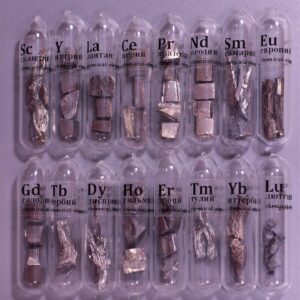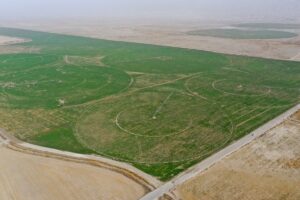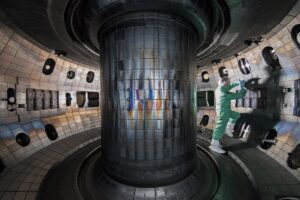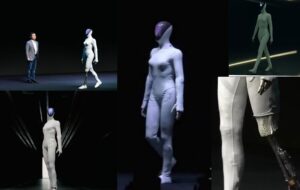 Pin
Pin Masahiro Hara / Photo courtesy of Denso Wave Inc.
You’ve probably scanned dozens of them this week—those black-and-white squares that pop up on restaurant menus, product packages, and concert tickets. They’re so common now that we barely think about them, like doorknobs or shoelaces. But every time you point your phone at one of those pixelated squares, you’re using technology born from a very specific frustration in a Japanese car parts factory, the kind of everyday annoyance that makes a man want to throw his lunch box across the room.
One engineer named Masahiro Hara decided there had to be a better way, and being Japanese, he didn’t just complain about it over sake—he fixed it. What he created in 1994 wasn’t just an improvement on the old barcode. It was something altogether different, like comparing a telegram to a telephone call. The QR code didn’t become popular overnight, though. It took a global pandemic and millions of germaphobic diners refusing to touch laminated menus to finally push this 30-year-old invention into our daily lives. The man behind it never got rich from his creation, and that was exactly how he wanted it—a detail that would’ve pleased, who knew something about the difference between fortune and satisfaction.
Table of Contents
The Man Behind the Squares
Masahiro Hara wasn’t trying to become famous. He was just tired of watching factory workers waste half their day waving barcode scanners over parts like they were trying to divine the future from chicken bones. In 1994, Hara worked as an engineer at Denso Wave, a subsidiary of Toyota that made components for automobiles. The factory floor was a ballet of organized chaos, and the old barcode system was the one dancer who kept stepping on everyone’s toes. Workers had to scan multiple barcodes on a single part sometimes, and each scan took precious seconds. Add that up over thousands of parts, and you’ve got a productivity problem that would make any factory manager lose sleep.
Hara looked at this mess and thought like a man who’d rather solve a problem than complain about it. He gathered a small team and started asking a question that seems obvious now but was radical then: why do codes have to be one-dimensional? The traditional barcode was just a series of vertical lines, holding about 20 characters of information at best. That’s barely enough to identify a product, let alone tell you anything useful about it. Hara figured if he could make a code that worked in two dimensions—up and down, side to side—he could pack in far more information. It was the difference between writing on a single line versus filling an entire page. The idea was simple, but making it work would take the kind of stubborn persistence that built railroads and carved mountains.
The Birth of Quick Response
The team spent about a year and a half tinkering with designs, and Hara spent his lunch breaks doing something peculiar—he played the Japanese board game Go and stared at crossword puzzles. He wasn’t procrastinating. He was hunting for patterns that the human eye could recognize instantly but that wouldn’t get confused with random marks or smudges. The breakthrough came when he noticed that certain shapes almost never appear together in the natural world or in printed materials. Those three square patterns you see in the corners of every QR code? Those weren’t arbitrary. They’re position markers, clever little anchors that tell a scanner, “Hey, this is a code, and here’s which way is up.” You could stick a QR code on a curved bottle, photograph it at an angle, even tear off a corner, and it would still work. That was the magic.
But storing more information was only half the battle. The code also needed to be scannable at lightning speed, because factory workers don’t have time to stand around waiting for technology to catch up with their hands. Hara and his team developed algorithms that could read the code from any direction in a fraction of a second. They called it the Quick Response code, which tells you everything about their priorities—speed mattered more than elegance. By 1994, they had a working prototype that could hold 7,000 numerals or about 4,000 alphanumeric characters. That’s roughly the length of a short essay, all contained in a square smaller than a postage stamp. The traditional barcode, by comparison, was still struggling to hold a single sentence.
The Decision That Changed Everything
Denso Wave owned the patent for this remarkable invention, and they could’ve done what any sensible corporation does—they could’ve charged licensing fees, built walls around their technology, and gotten rich enough to buy small islands. Instead, they made a decision that seemed downright foolish by Wall Street standards: they released the QR code specification to the public for free. Anyone could use it, modify it, build businesses around it, and Denso Wave wouldn’t collect a single yen. Hara supported this decision wholeheartedly. He believed that if the technology was going to be useful, it needed to spread like wildfire, not trickle out behind paywalls and legal paperwork.
This wasn’t pure altruism, mind you—the Japanese have always understood something about the long game that American businesses often miss. Denso Wave figured they’d make their money selling the scanners and equipment, not by strangling the technology itself. And they were right, though perhaps not in ways they initially imagined. The free license meant that as mobile phones got smarter and cameras got better, anyone could write an app to read QR codes without asking permission or paying tribute. That openness turned out to be the difference between a clever factory tool and a global phenomenon. Sometimes the best way to profit from an idea isn’t to own it completely, but to let it loose and see where it runs. Hara had built something genuinely useful, and he was wise enough not tochain it down.
The Slow Climb to Recognition
For the first decade of its life, the QR code lived a quiet existence in factories and warehouses, doing honest work that nobody outside the manufacturing world particularly noticed or cared about. It was like a reliable horse that showed up every day, did its job without complaint, and never made the newspapers. Japanese companies adopted it enthusiastically because it solved real problems—inventory tracking became faster, supply chains became more accurate, and workers stopped developing repetitive strain injuries from scanning the same box seventeen times. But to the average person walking down the street, QR codes might as well have been hieroglyphics on a cave wall. They existed, sure, but they existed in someone else’s world.
The technology started creeping into public view around 2002 when Japanese mobile phone carriers began including QR code readers in their devices. Suddenly these squares started appearing on advertisements, business cards, and product packaging throughout Japan. You could scan a code on a movie poster and get taken straight to the ticket-buying page, or scan one on a business card and have all the contact information dump directly into your phone. It was convenient in the way that electric lights were convenient—once you had it, you wondered how you’d ever managed without it. But this revolution stayed mostly confined to Japan. The rest of the world was still fumbling with flip phones and thinking that texting without looking at the keyboard was the height of technological achievement. QR codes would have to wait their turn.
The Smartphone Revolution
The real turning point came when Apple released the iPhone in 2007, though even then it took a while for the pieces to fall into place. Early smartphones had cameras, but they didn’t automatically know what to do with a QR code any more than a dog knows what to do with a Rubik’s Cube. You needed to download a separate app, and most people couldn’t be bothered. The technology was there, sitting in everyone’s pockets, but the connection hadn’t been made yet. It’s a bit like having a can opener and a can of beans in different rooms of the house—technically you have everything you need for a meal, but you’re still going to go hungry until you bring them together.
Things started shifting around 2017 when Apple and Android both built QR code readers directly into their camera apps. No separate download, no hunting through app stores, no instructions needed. You just pointed your camera at the square, and a notification popped up asking if you wanted to follow the link. That simple change removed the last barrier between QR codes and mass adoption. Marketers started using them more aggressively, museums put them next to exhibits, and stores began experimenting with them for quick checkouts. But even then, plenty of people ignored them. Americans in particular remained skeptical, viewing QR codes as a gimmick that never quite caught on, like 3D television or Google Glass. We were wrong about that, as it turned out, but we needed one more push to figure it out.
A Pandemic Changes Everything
Then came 2020, and suddenly nobody wanted to touch anything that other people had touched. The pandemic turned us all into amateur germaphobes, eyeing doorknobs with suspicion and treating restaurant menus like they’d been dipped in questionable science experiments. Restaurants faced a peculiar challenge—how do you show people what’s for dinner without handing them a physical menu that’s been in forty other people’s hands that day? Some places tried printing disposable paper menus, which solved the hygiene problem but created mountains of waste and ate into already thin profit margins. Others attempted to describe their offerings verbally, which worked about as well as you’d expect when you’ve got a server trying to recite seventeen appetizers from memory while three other tables are waving them down.
The QR code turned out to be the perfect solution, arriving like an old friend who shows up at exactly the right moment with exactly what you need. Restaurants stuck them on table tents, taped them to windows, printed them on receipts. Diners pulled out their phones, scanned the code, and the menu appeared on their screens—no app required, no physical contact necessary, no fuss. Within months, QR codes went from “that weird thing I saw once” to an utterly normal part of eating out. Coffee shops used them for ordering, bars used them for tabs, and even fancy establishments that had previously insisted on leather-bound menu books surrendered to the practicality of it all. The technology hadn’t changed one bit since 1994, but the world had finally caught up to what Hara and his team had built.
Beyond the Menu
Once people got comfortable scanning QR codes for menus, businesses started realizing these little squares could do a whole lot more than just avoid germs. Museums that had been giving out clunky audio guide devices for twenty bucks a pop suddenly discovered they could stick QR codes next to every painting and sculpture. Visitors scanned them with their own phones and got detailed explanations, video clips, sometimes even augmented reality experiences that brought the artwork to life. No more waiting in line to rent equipment, no more worrying about returning it before closing time, no more dead batteries halfway through the Egyptian wing. The visitor experience improved dramatically, and museums saved money on hardware and staff time. That’s the kind of win that makes administrators weep with joy.
Retailers caught on fast too. Product packaging sprouted QR codes that linked to instruction manuals, recipe ideas, or videos showing you how to assemble that bookshelf without ending up with three extra screws and a wobbly shelf. Concert venues and airlines replaced paper tickets with QR codes, which made scalping harder and gate entry faster. Even cemeteries started putting them on headstones so visitors could read full biographies of the deceased instead of just dates and a short inscription. That last one might sound morbid, but it’s actually quite touching—a way to keep stories alive long after the storytellers are gone. The QR code had become a bridge between physical objects and digital information, connecting two worlds that had previously required awkward workarounds to speak to each other.
The Dark Side of Convenience
Now, no technology comes without its troubles, and QR codes have picked up their share of problems along the way. The same feature that makes them useful—the ability to hide a web address inside a pattern of black and white squares—also makes them dangerous in the wrong hands. You can’t look at a QR code and know where it’s going to take you any more than you can read a locked diary just by staring at the cover. Scammers figured this out pretty quickly. They started printing fake QR codes and sticking them over legitimate ones on parking meters, restaurant tables, and flyers. Unsuspecting people scanned them and got directed to phishing websites designed to steal credit card information or install malware on their phones. It’s an old con in new clothing, the digital equivalent of a pickpocket bumping into you on a crowded street.
The problem gets worse because we’ve trained ourselves to trust QR codes without thinking. We scan them automatically now, the same way we click links in emails without reading the full address. Security experts have been hollering about this for years, but most folks don’t pay attention until they get burned. Some phone operating systems now show you a preview of the web address before opening it, which helps if you’re paying attention and know what a suspicious link looks like. But plenty of people just tap through without reading, especially when they’re hungry and want to see the menu or rushed and need to pay for parking. The convenience that makes QR codes wonderful is the same thing that makes them a gift to criminals. Hara built a tool, and like most tools, it can be used for good or twisted toward harm depending on whose hands are holding it.
How They Actually Work
Understanding how a QR code works doesn’t require a degree in computer science, though the elegance of it might make you wish you’d paid more attention in math class. At its heart, a QR code is just a clever way of storing information in a pattern that machines can read quickly. Those black and white squares aren’t random—each one represents a bit of data, either a one or a zero in binary code. The pattern translates into numbers, letters, or web addresses using an algorithm that compresses information efficiently. Think of it like Morse code, except instead of dots and dashes stretched out over time, you’ve got an entire message compressed into a single square inch of space that can be read all at once.
The three large squares in the corners are the unsung heroes of the whole system. They tell the scanner where the code starts and which direction it’s facing, which means you can scan a QR code upside down, sideways, or at a tilt and it’ll still work perfectly fine. The smaller square in the bottom right helps with alignment and timing. The rest of the pattern contains the actual data, plus something called error correction codes—redundant information sprinkled throughout that allows the code to be read even if it’s partially damaged or obscured. You can cover up about thirty percent of a QR code with a coffee stain or a corporate logo, and it’ll still scan just fine. That robustness is what made them practical for real-world use, where things get dirty, torn, and generally beaten up. Hara understood that perfection is the enemy of useful, so he built in forgiveness.
The Future Still Being Written
The QR code at age thirty-one is still evolving, which says something about the staying power of good design. Companies have started making them prettier, embedding them in artistic designs where the functional pattern blends with colors, images, and brand logos. You’ll see QR codes shaped like company mascots or woven into photographs so seamlessly that you barely notice them until someone points them out. The technology allows for this creativity because of those error correction features—as long as enough of the pattern remains readable, the scanner doesn’t care if you’ve turned the rest into a work of art. It’s a marriage of form and function that would’ve seemed impossible back when QR codes were just utilitarian black squares on white backgrounds in factory warehouses.
The more interesting development is how QR codes are becoming gateways to verification and authentication. Concert venues use them for digital tickets that change patterns every few seconds, making counterfeiting nearly impossible. Luxury brands embed them in products to prove authenticity and let buyers trace the entire supply chain from factory to store shelf. Some countries are experimenting with QR codes on prescription medications to fight counterfeit drugs, and others use them on government documents to prevent forgery. We’re also seeing them show up in unexpected places—gravestones, as mentioned earlier, but also on biodegradable packaging that links to composting instructions, and on historic buildings that tell the stories of what happened within those walls. Hara’s invention has become a thread connecting the physical world to an ever-expanding web of digital information, and we’re still figuring out all the ways to pull on that thread.
The Inventor's Quiet Legacy
Masahiro Hara never became a household name, and that suits him just fine. He’s given a few interviews over the years, speaking with the modest demeanor of a man who fixed a problem and moved on with his life rather than someone who changed the world. When asked about not making billions from his invention, he doesn’t express regret or bitterness. He talks instead about seeing QR codes in the wild—on billboards, in shop windows, on vaccine cards during the pandemic—and feeling satisfied that something he made turned out to be genuinely useful to people. That kind of contentment is rarer than wealth and probably more durable. He still works in technology, still solves problems, still goes about his business without fanfare or celebrity.
The story of the QR code is really a story about patience and purpose meeting opportunity. Hara built something practical in 1994, and it took the world nearly thirty years to catch up and realize what it had. The technology didn’t change much in those three decades—what changed was us and the world we built around it. We needed smartphones to become universal, cameras to get better, and a pandemic to force us out of our comfortable habits before we finally embraced those little black and white squares. Sometimes the best inventions aren’t the flashiest or the ones that promise to revolutionize everything overnight. Sometimes they’re quiet solutions to everyday problems, waiting patiently in the wings until the moment arrives when the world finally needs them. Hara understood that, and he was content to wait.
FAQs
The code itself never expires, but the website or content it links to might be taken down or changed by whoever created it, making the link useless.
A standard QR code can store up to 4,296 alphanumeric characters, which is roughly the length of two full pages of text or a short essay.
They’re generally safe, but always check the preview URL before opening it. Scammers sometimes place fake codes over real ones to steal information.
You need internet to access web links inside the code, but your phone can read the code itself offline and show you what it contains.
Denso Wave owns the patent but released it for free public use, allowing anyone worldwide to create and scan QR codes without paying fees.
































